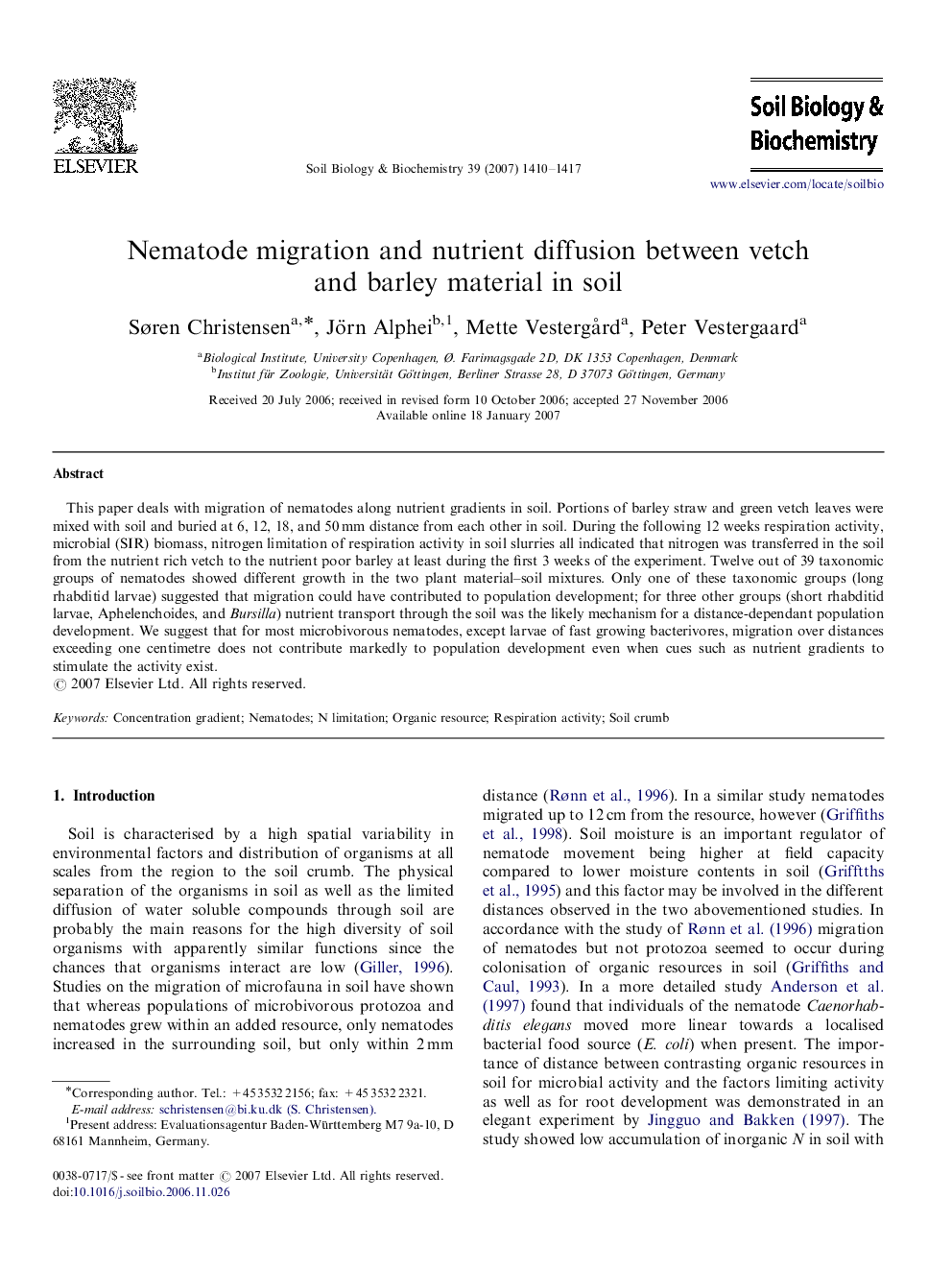| Article ID | Journal | Published Year | Pages | File Type |
|---|---|---|---|---|
| 2026206 | Soil Biology and Biochemistry | 2007 | 8 Pages |
This paper deals with migration of nematodes along nutrient gradients in soil. Portions of barley straw and green vetch leaves were mixed with soil and buried at 6, 12, 18, and 50 mm distance from each other in soil. During the following 12 weeks respiration activity, microbial (SIR) biomass, nitrogen limitation of respiration activity in soil slurries all indicated that nitrogen was transferred in the soil from the nutrient rich vetch to the nutrient poor barley at least during the first 3 weeks of the experiment. Twelve out of 39 taxonomic groups of nematodes showed different growth in the two plant material–soil mixtures. Only one of these taxonomic groups (long rhabditid larvae) suggested that migration could have contributed to population development; for three other groups (short rhabditid larvae, Aphelenchoides, and Bursilla) nutrient transport through the soil was the likely mechanism for a distance-dependant population development. We suggest that for most microbivorous nematodes, except larvae of fast growing bacterivores, migration over distances exceeding one centimetre does not contribute markedly to population development even when cues such as nutrient gradients to stimulate the activity exist.
